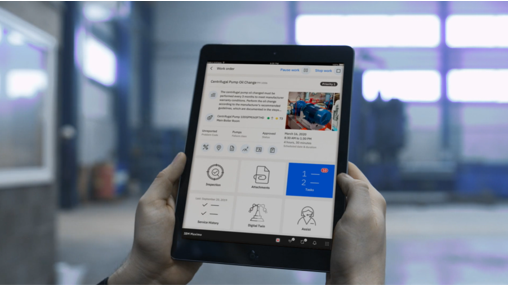This is the second of 3 articles outlining the configuration of Maximo to align with a number of Asset Management best practice elements. In this blog, we will be focusing primarily on Schedule Compliance. Maximo has a number of standard features that can easily make Works Management very efficient for an organisation. Efficient in this sense means optimizing the workforce by having them engaged and working on the things that matter.
Setting up your Work Orders
The first step to achieving schedule compliance is to set up every maintenance activity as a Work Order (WO). WO’s are assigned a work type, have an attached start date and a frequency (if it is a recurring event). You also attach a job plan that carries the details of the work to be done i.e. spare parts, labor types and estimated durations. Ideally you want to also attach the WO to a logical place in the hierarchy for life cycle costing. View the previous article for details on how to setup the foundation to your asset management systems.
WO’s also have the ability to nest. This means you have a number of smaller, more frequent services on an equipment with an occasional larger one. The smaller ones aren’t created when the larger one comes around.
Straight out of the box can include a number of standard work types. Inspections, planned, corrective and emergency maintenance are all part of the standard configuration. There is also the ability to easily add further work types any organisation feels is a better fit for them. However be careful about adding too many.
Managing inspections for Schedule Compliance
As maintenance becomes more driven by condition, inspections are becoming more the norm. This can be easily managed by the dedicated inspections module including electronic forms capability. The routes functionality allows the ability to aggregate like inspections together grouping enough work for a maintainer to conduct throughout a shift. For those organisations where maintenance costs are religiously recorded against each asset, the time allotted to the task is proportioned accordingly.
The instructions and details associated with the WO are all captured in the Job plan. The more detail provided here, the higher chance of success of the job being carried out correctly. Job plans can be created using a template approach. By this I mean where there are like jobs or information that is consistent across all jobs (i.e. safety instructions) then you simply don’t need to reconstruct this each time.
Furthermore Maximo has a powerful work flow engine that allows an organisation to route approvals depending on your internal policies. As an example planners may be able to approve work up to $5k above needs to go through a manager.
One of the quickest wins in maintenance in most organisations is moving from a time based program to one triggered by runtime. This means maintenance conducted based on the amount an asset has been used. To illustrate, a piece of equipment might be recommended to be maintained on a 3 month or 250hr interval, however currently it is only doing 100hrs during that time. Therefore you would be maintaining twice as much and could potentially halve your maintenance costs moving to a regime driven by usage.
Maximo and Meters
Maximo has a concept around Meters (and by this I don’t mean gas or water meters). There are 3 types, continuous (operates a bit like an hour meter), gauge (similar to the temp gauge in your car) and characteristic (you can enter a value i.e. hot/cold). You use these, populated with data feeds from your equipment to drive the automatic creation of WO’s.
The second quickest win is automating the WO as you use it to support schedule compliance. In the background is the Crontask automation engine. When turned on, your scheduled work will be automatically created each week or month decreasing the chances of work being missed.
Once the WO has been created we can then see it all laid out in either a list or calendar view in the scheduler module. The work can be assigned either using the automation tool, often used for the first pass or through simple drag and drop functionality. Typical project management tools like creating dependencies, splitting work across shifts and color highlights when job rules like “finish later than” are broken.
Using Mobility to achieve Schedule Compliance
Now that we have created the WO, added the detail and scheduled the work to an individual or crew, the final step to achieving schedule compliance is delivering the information to the maintainer. Most individuals these days have easy access to most smart devices so mobility is the most obvious choice. There are a number of options around apps that complete the picture. It is important that you approach mobility with the maintainer in mind. So pick a mobile application that is user friendly and deploy a Mobile Device Management tool to assist with the management and continuous improvement of mobility.
In the next series we will talk through the importance of reporting and the many ways this can be easily managed. Contact BPD Zenith for further information in any of these areas.




